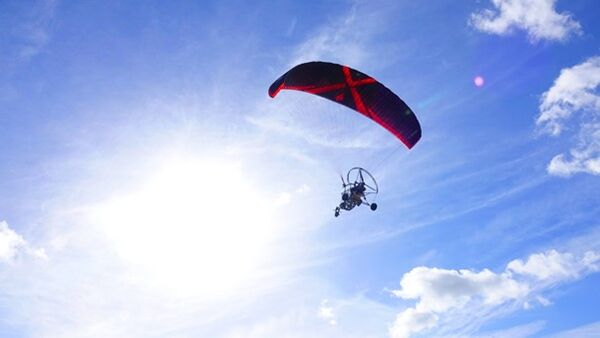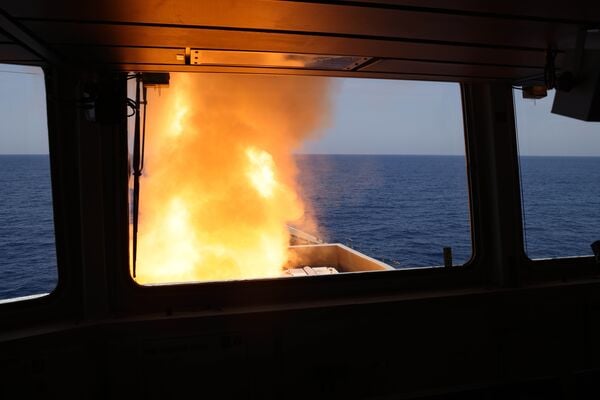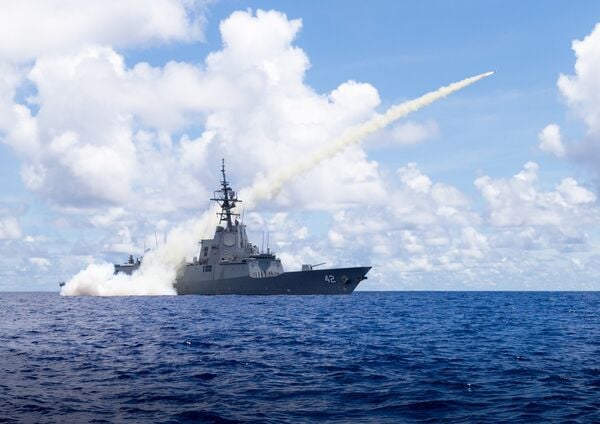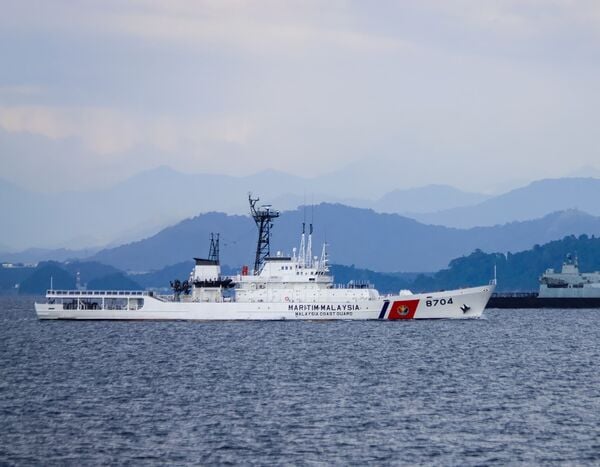- About
- Intara
- Capabilities
- Advisory
- Resources
- News
- Store
UK Royal Navy selects Animal Dynamics' parafoil UAV for next phase of Heavy Lift Challenge
17 March 2023
by Kate Tringham


A developmental Stork test vehicle going through flight trials. (Animal Dynamics)
Oxford-based Animal Dynamics' Stork STM parafoil unmanned aerial vehicle (UAV) has been selected by the UK Royal Navy (RN) to participate in the second phase of its Unmanned Aerial Systems Heavy Lift Challenge (UASHLC).
The Stork STM was selected following a pre-selection flying competition in late 2022, in which it demonstrated the ability to conduct beyond-visual-line-of-sight (BVLOS) operations and carry a 135 kg payload over a distance of 400 km – meeting the RN's requirements for both intra- and inter-theatre resupply tasks.
The UAV will now progress to the next round of flight trials, which will be carried out over seven days at Predannack Airfield in Cornwall, South West England, starting on 27 March.
As part of the UASHLC effort, the Stork STM will undergo marinisation, including integration of secure satellite communications (satcom) and fitting a sonobuoy dispenser. It will also undergo additional wing development work that includes a retraction capability to make it safe for deck operations, Animal Dynamics said.
HMS Diamond shoots down Houthi missile in Red Sea
26 April 2024
by Kate Tringham


HMS Diamond shoots down a missile fired by Iranian-backed Houthis from Yemen over the Gulf of Aden using its Sea Viper missile system – the first time a Royal Navy warship has intercepted a missile in combat since 1991. (Royal Navy/Crown Copyright)
The UK Royal Navy's (RN's) Daring (Type 45)-class destroyer HMS Diamond (D 34) has successfully engaged an anti-ship ballistic missile (ASBM) launched by Yemen-based Ansar Allah (commonly known as Houthi) rebels targeting a merchant ship in the Gulf of Aden, the service confirmed on 25 April.
During the incident, which took place around 1151 h local time (Sanaa time) on 24 April, Diamond used its Sea Viper anti-air guided weapon system to shoot down the missile, the navy said. According to a US Central Command (CENTCOM) statement issued on 25 April, the missile was likely targeting the US-flagged, owned, and operated merchant vessel MV Yorktown, which has 18 US and four Greek crew members onboard.
No injuries or damage was sustained by the ship or its crew, CENTCOM said.
Diamond
Special Report: Australia to accentuate maritime capabilities amid China's coercion
25 April 2024
by Ridzwan Rahmat


A Royal Australian Navy Hobart-class guided-missile destroyer fires a Harpoon surface-to-surface missile during Exercise ‘Pacific Vanguard' 2022. The class will be equipped with the Naval Strike Missile in the future. (Commonwealth of Australia)
The Australian government has released two more policy documents that outline its defence development intentions over the next few years. The two documents – National Defence Strategy (NDS) 2024 and Integrated Investment Program (IIP) 2024 – were unveiled by Australia's Minister of Defence Richard Marles on 17 April.
The new policies follow Australia's Defence Strategic Review (DSR) – issued in April 2023 – and its evaluation of surface combatant capabilities, which was released earlier in 2024.
As outlined in the IIP 2024, the Australian government is projected to spend AUD765 billion (USD496 billion) in the decade between 2024 and 2034 on defence programmes. This amount includes an additional AUD56 billion above the previous trajectory that was forecast for this period.
Vietnam issues diplomatic note to Malaysia after South China Sea collision
25 April 2024
by Ridzwan Rahmat


A file image of KM Arau , which collided into a Vietnamese fishing vessel on 22 April. (MMEA)
Hanoi has issued a diplomatic note to Putrajaya after a Malaysia Maritime Enforcement Agency (MMEA) vessel collided into a Vietnamese fishing boat in disputed waters of the South China Sea, multiple sources close to the matter confirmed to Janes .
Vessels involved in the collision are the MMEA's sole Arau (Nojima)-class offshore patrol vessel (OPV) KM Arau and an unnamed fishing boat with pennant number 90729.
The collision took place on 22 April at about 15 n miles southeast of Investigator Shoal, which lies within the Spratly Islands cluster. The feature is occupied by Malaysia, but also claimed by China, Vietnam, and Taiwan as part of their respective maritime territories.
As a result of the collision, 22 fishermen from 90729 fell overboard and a search-and-rescue operation (SAR) was established by both the Vietnamese and Malaysian authorities.
Oxford-based Animal Dynamics' Stork STM parafoil unmanned aerial vehicle (UAV) has been selected by ...
Latest Podcasts
Iran Israel analysis
In this podcast Janes analysts discuss the Iranian attacks on Israel on the 14 April. They highlight the military systems used by Iran and the performance and impact of these on Israel. They also discuss the implications of this attack goi...
Listen nowJanes Case Studies
Using Janes Intara to build a common intelligence picture: Russian build up on the Ukrainian border
View Case StudyNews Categories
 Industry Details
Industry Details